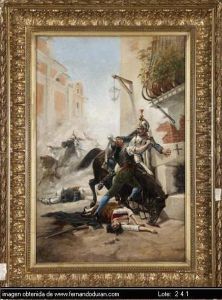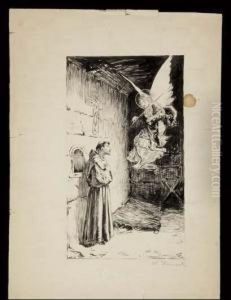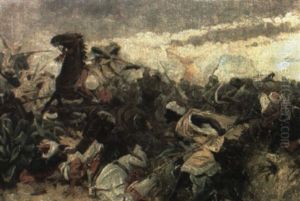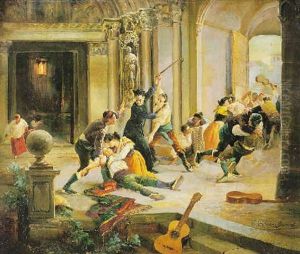Cesar Alvarez Dumont Paintings
César Álvarez Dumont was a distinguished Spanish painter, born in 1866 in Cádiz, Spain, and passed away in 1945. He was part of a notable family of artists and intellectuals; his brothers, Gerardo and Enrique, also achieved recognition in their respective fields. César's journey into the world of art began under the guidance of his uncle, the celebrated history painter Eduardo Álvarez Dumont. This early exposure played a crucial role in shaping his artistic direction and interests.
Álvarez Dumont's body of work primarily revolves around historical and genre scenes, often imbued with a romanticism characteristic of the late 19th and early 20th centuries. His paintings are known for their meticulous attention to detail, vibrant portrayal of historical events, and the ability to capture the essence of the human spirit. One of his most celebrated works includes depictions of significant moments in Spanish history, contributing to the national narrative through his art.
Throughout his career, César Álvarez Dumont received numerous accolades and was an active participant in many exhibitions, both in Spain and internationally. His works were highly regarded for their technical proficiency and emotional depth, garnering respect and admiration from his contemporaries and art enthusiasts alike.
Despite his success, Álvarez Dumont's personal life and the broader historical context of his time—marked by turbulent events such as the Spanish Civil War—shaped his artistic output. The evolution of his style reflects a response to the changing social and political landscape of Spain, showcasing his adaptability and depth as an artist.
Today, Álvarez Dumont's legacy is preserved in various museums and collections, where his contributions to Spanish art and history continue to be celebrated. His paintings not only offer a window into the past but also highlight the enduring power of art to capture the human experience.




















